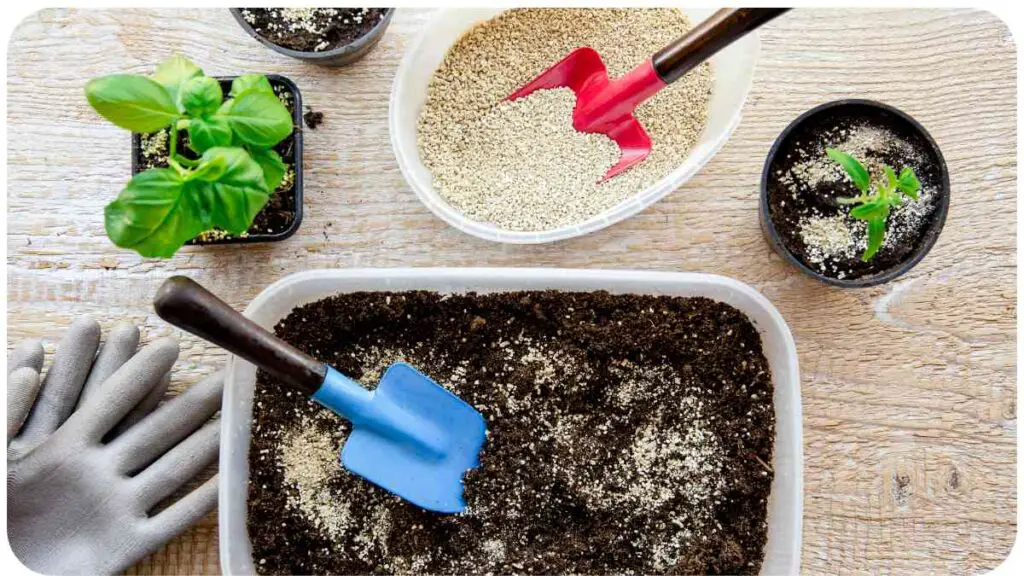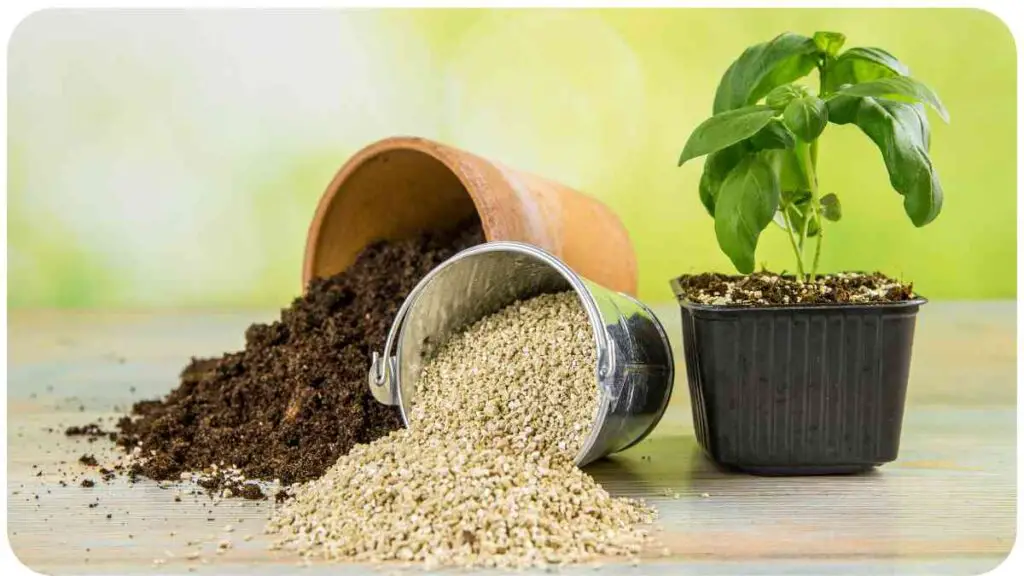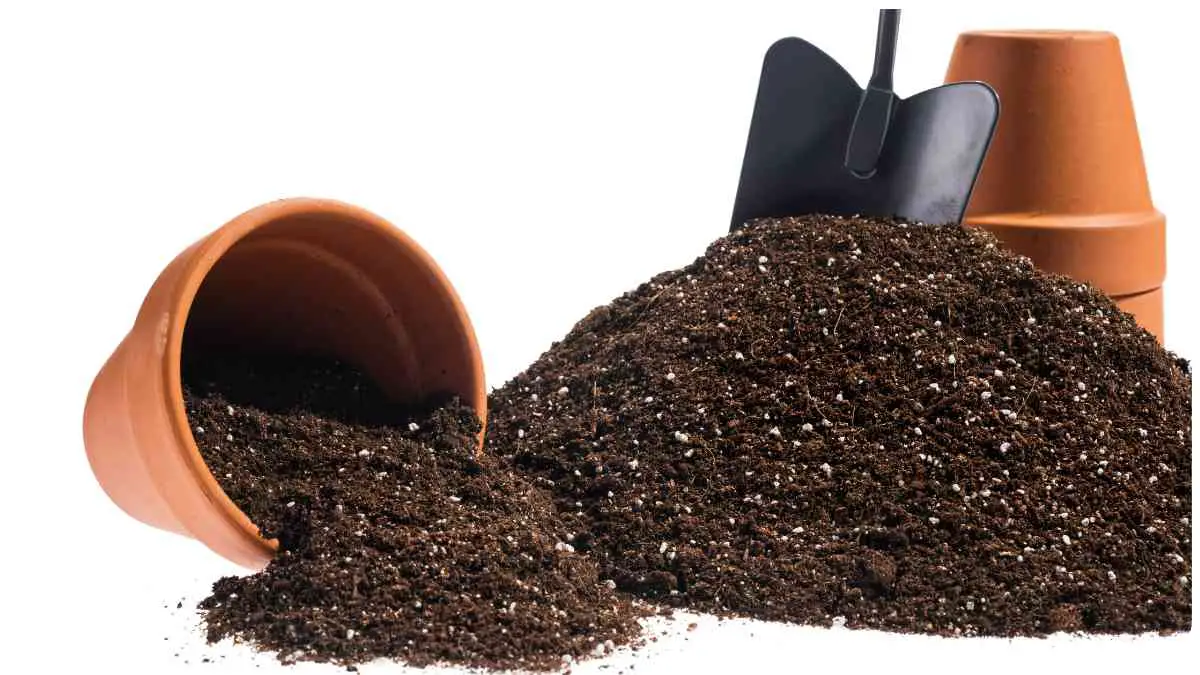Potting mix is the lifeblood of container gardening, providing plants with essential nutrients, water, and air. But what happens when your potting mix goes bad? How do you even know if it’s gone off?
In this article, we’ll explore the signs that indicate your potting mix may be past its prime, common problems that occur, and how to test it. By the end, you’ll have the knowledge to keep your plants thriving in healthy soil.
| Takeaways |
|---|
| Regularly inspect potting mix for signs of |
| deterioration such as foul odors, mold growth, |
| or pest infestations. |
| Test potting mix moisture, pH, and nutrient |
| levels periodically to ensure optimal plant |
| health. |
| Prevent bad potting mix by using quality |
| ingredients, maintaining proper moisture levels, |
| and fertilizing regularly. |
2. Understanding Potting Mix

Before we dive into detecting bad potting mix, let’s briefly understand what potting mix is. Unlike garden soil, potting mix is a specially formulated blend of organic and inorganic materials designed to provide the optimal environment for container plants. It’s engineered to be well-draining yet moisture-retentive, with a balanced pH and sufficient nutrients for plant growth.
Selecting the perfect potting mix for your plumeria plants is crucial for their growth and blooming. Make sure to choose a mix that provides adequate drainage and nutrients.” best potting mix for plumeria
3. Signs of Bad Potting Mix
Table: Signs of Bad Potting Mix
| Sign | Description |
|---|---|
| Foul Odor | A strong, unpleasant smell may indicate anaerobic conditions or fungal growth. |
| Mold or Fungus Growth | Visible mold or fungal growth on the surface of the potting mix is a clear sign of decay. |
| Excessive Moisture Retention | Potting mix that stays soggy for extended periods can lead to root rot and other issues. |
| Presence of Pests | Insects like fungus gnats or springtails may infest deteriorating potting mix. |
| Poor Plant Growth | Stunted growth, yellowing leaves, or wilting plants can signal nutrient deficiencies. |
Identifying these signs early can help you take corrective action before your plants suffer.
Common Problems in Potting Mix
Table: Common Problems in Potting Mix
| Problem | Description |
|---|---|
| Compaction | Over time, potting mix can become compacted, reducing air circulation to plant roots. |
| Nutrient Depletion | Continuous plant growth can deplete the nutrients in potting mix, leading to deficiencies. |
| pH Imbalance | Fluctuations in pH levels can affect nutrient availability and plant health. |
| Pest Infestation | Pests like aphids, spider mites, or thrips can thrive in deteriorating potting mix. |
| Disease Transmission | Pathogens and diseases may persist in contaminated potting mix, infecting plants. |
Understanding these problems can help you address them proactively.
Calculating the right amount of potting soil ensures optimal growth for your plants in a 30-gallon pot. Overfilling or underfilling can affect root development and overall health.” potting soil for a 30-gallon pot
Effects of Bad Potting Mix on Plants
Table: Effects of Bad Potting Mix on Plants
| Effect | Description |
|---|---|
| Poor Growth | Plants may exhibit stunted growth, yellowing leaves, or overall decline in health. |
| Root Rot | Excessive moisture retention in bad potting mix can lead to root rot and root suffocation. |
| Pest Infestation | Deteriorating potting mix provides a breeding ground for pests, leading to infestations. |
| Disease Spread | Pathogens present in bad potting mix can spread diseases to otherwise healthy plants. |
| Reduced Flowering/Fruiting | Nutrient deficiencies and stress from poor potting mix can result in fewer flowers or fruits. |
How to Test Potting Mix

Testing your potting mix can provide valuable insights into its health and suitability for your plants. Here are some methods you can use:
Table: Testing Potting Mix Methods
| Method | Description |
|---|---|
| Visual Inspection | Examine the potting mix for signs of mold, fungus, or pests. Look for any unusual odors. |
| Squeeze Test | Grab a handful of potting mix and squeeze it tightly. If it clumps together excessively, it may be too wet. |
| pH Testing | Use a pH testing kit to determine the acidity or alkalinity of the potting mix. Optimal pH for most plants is around 6 to 7. |
| Moisture Meter | Insert a moisture meter into the potting mix to gauge its moisture level. Ideally, it should be moist but not waterlogged. |
| Nutrient Analysis | Conduct a nutrient analysis to assess the levels of essential nutrients in the potting mix. This can be done through laboratory testing or using home kits. |
Regularly testing your potting mix can help you maintain optimal conditions for your plants and catch any issues early.
Regularly replacing potting soil is essential to maintain the health of your plants and prevent nutrient depletion. Learn the signs indicating it’s time for a soil change in your garden containers.” replace my potting soil
7. Tips for Preventing Bad Potting Mix
Prevention is key when it comes to maintaining healthy potting mix. Here are some tips to keep your potting mix in top condition:
- Choose Quality Ingredients: Start with a high-quality potting mix that is well-draining and nutrient-rich.
- Use Clean Containers: Ensure your pots and containers are clean and sterilized before planting to prevent contamination.
- Monitor Moisture Levels: Avoid overwatering your plants, as this can lead to waterlogged potting mix and root rot.
- Fertilize Regularly: Supplement your potting mix with organic or slow-release fertilizers to replenish nutrients.
- Rotate Plants: Rotate your container plants periodically to ensure even nutrient uptake and prevent soil depletion.
- Refresh Annually: Consider replacing your potting mix annually or repotting plants into fresh mix to prevent nutrient depletion and compaction.
By following these tips, you can maintain healthy potting mix and promote thriving plant growth.
8. Conclusion
In conclusion, knowing how to recognize the signs of bad potting mix is essential for maintaining healthy container plants. By understanding the common problems, testing methods, and prevention tips outlined in this article, you can ensure that your potting mix remains a nurturing environment for your beloved plants.
Remember to stay vigilant, regularly monitor your potting mix, and take proactive steps to address any issues that arise. With proper care and attention, you can enjoy lush, vibrant container gardens year-round.
Knowing how to properly replace potting soil ensures a smooth transition for your plants and promotes continued growth. Follow these steps to maintain a healthy environment for your potted plants.” replace potting soil
Further Reading
Here are some additional resources for further reading on the topic of potting soil and its longevity:
- Does Potting Soil Go Bad? – Rosy Soil: Rosy Soil discusses the factors that contribute to potting soil degradation and offers tips for extending its lifespan.
- Does Potting Soil Go Bad? – Meadowlark Journal: Meadowlark Journal explores the signs of bad potting soil and provides insights into proper storage and maintenance practices.
- Does Potting Soil Go Bad? – Organic Plant Magic: Organic Plant Magic delves into the importance of using high-quality organic potting soil and offers recommendations for ensuring its freshness and effectiveness.
FAQs
How long does potting soil last?
Potting soil can last for several years if stored properly in a cool, dry place. However, its effectiveness may diminish over time due to nutrient depletion and compaction.
Can you use expired potting soil?
Expired potting soil may still be usable, but its effectiveness may be reduced. It’s best to assess its condition and supplement it with fresh soil or amendments if necessary.
What are the signs of bad potting soil?
Signs of bad potting soil include foul odors, mold or fungus growth, excessive moisture retention, presence of pests, and poor plant growth.
How can I revive old potting soil?
You can revive old potting soil by aerating it, adding organic matter or compost, and adjusting its pH if necessary. Mixing in fresh soil or amendments can also help rejuvenate it.
How do I prevent potting soil from going bad?
To prevent potting soil from going bad, store it in airtight containers, keep it dry, avoid overwatering plants, and replenish nutrients regularly with fertilizers or compost.

For 15 years, Hellen James has worked in the gardening industry as an expert and landscape designer. During her career, she has worked for a variety of businesses that specialize in landscaping and gardening from small firms to large corporations.

